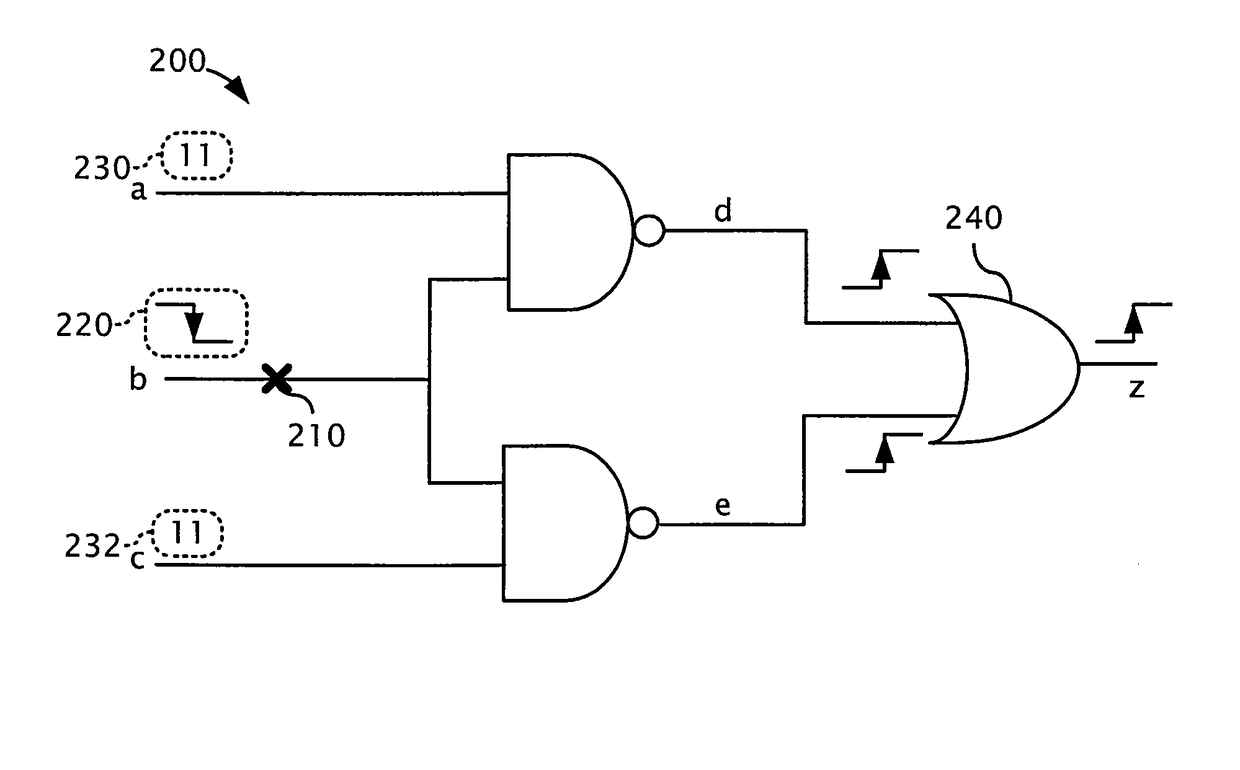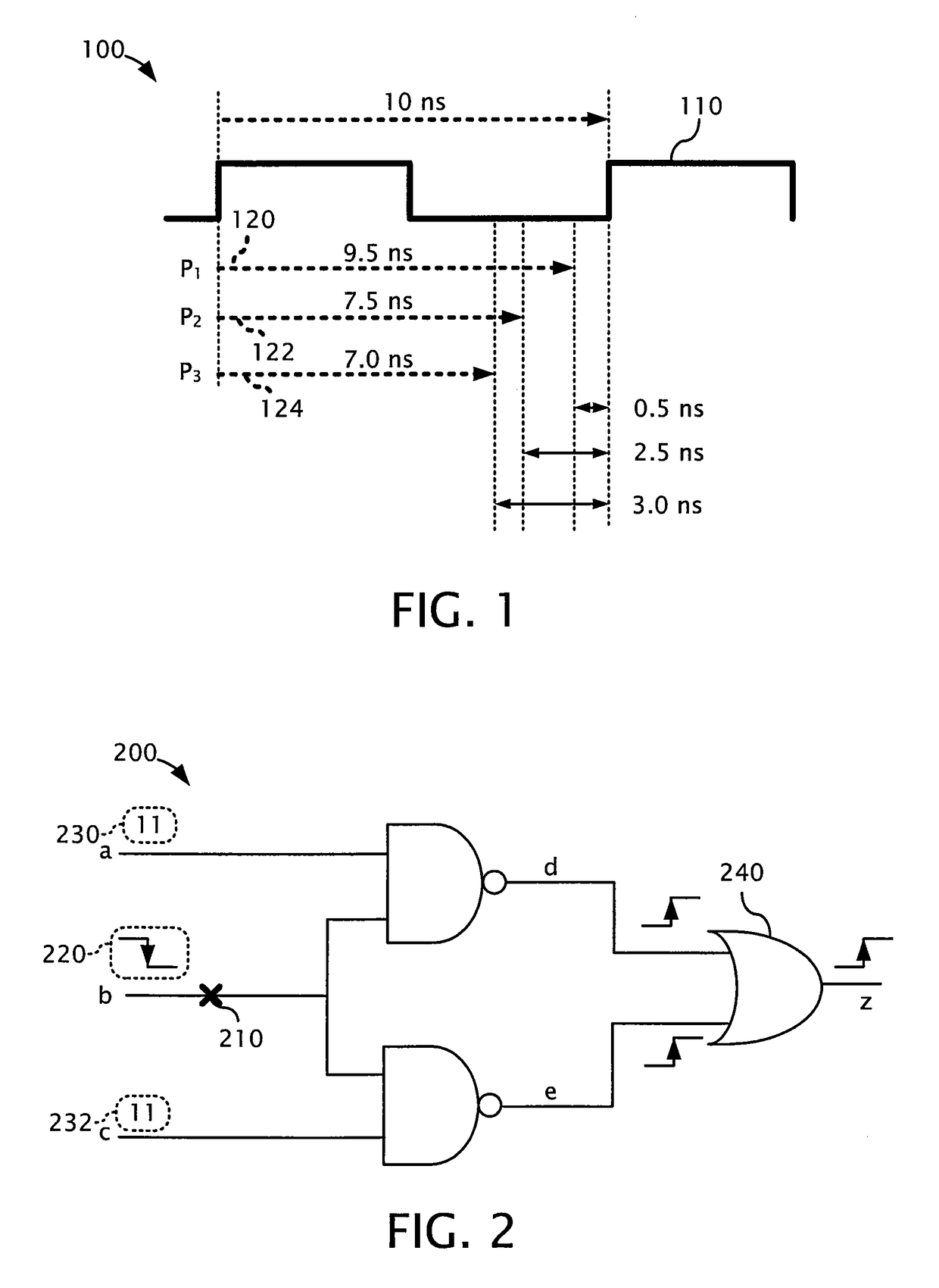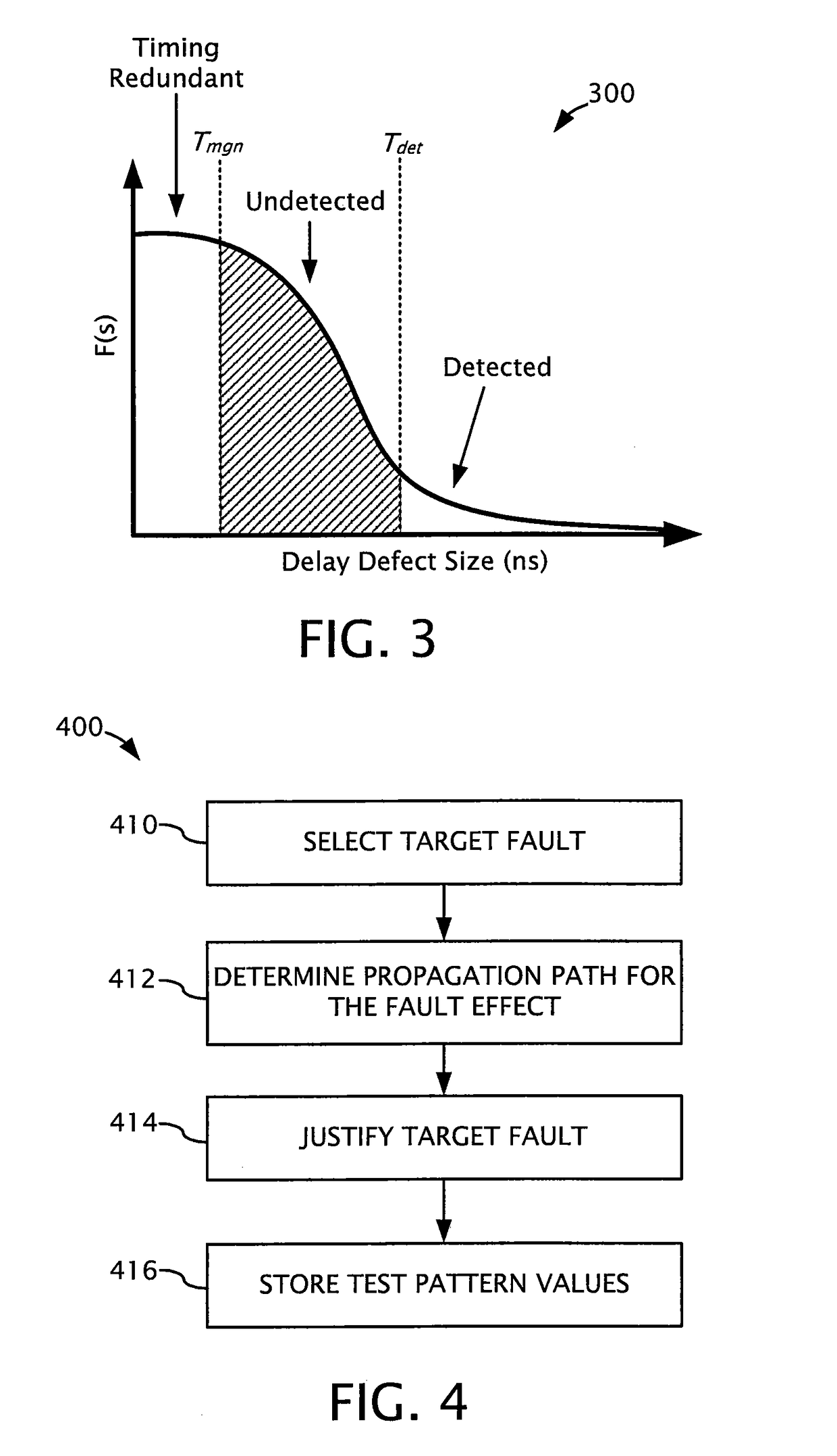Timing-aware test generation and fault simulation
a technology of timing awareness and test patterns, applied in the field of generating test patterns for testing integrated circuits, can solve the problems of circuits that are more susceptible to timing-related defects, circuits that are typically affected by delay-related defects, and circuits that are not suitable for normal operation, so as to improve the quality of a test set and improve the path coverage
- Summary
- Abstract
- Description
- Claims
- Application Information
AI Technical Summary
Benefits of technology
Problems solved by technology
Method used
Image
Examples
exemplary embodiment 1100
[0141]FIG. 11 is a flowchart of an exemplary embodiment 1100 for applying the fault dropping criterion. At 1110, fault simulation is performed for a test pattern to determine the actual path delays. For example, the fault simulation procedure 900 illustrated in FIG. 9 can be performed for a test pattern ti. At 1112, a fault detected by the test pattern ti is selected. For example, one of the faults that was determined to be detected by the test pattern ti (e.g., at 912) can be selected. At 1114, a determination is made as to whether the fault should be removed from the fault list based at least in part on the actual slack of the path. For example, a criteria based on the slack margin (such as the criteria in expression (14)) can be used. Based on the outcome of the determination at 1114, the fault is either removed at 1116 or left remaining on the fault list. At 1118, a determination is made as to whether any faults remain on the fault list that were detected by the test pattern ti....
exemplary embodiment 1600
[0161]FIG. 16 is a flowchart of an exemplary embodiment 1600 for performing test pattern generation using the existence of timing critical faults as an additional criterion. At 1610, the target fault list is generated. At 1612, timing critical faults are identified from the target fault list. For example, in one desirable embodiment, timing critical faults are identified using the criterion shown in expression (16). At 1614, a fault from the target fault list is selected (e.g., the next fault) and is targeted at 1616 by the timing-aware deterministic test generation procedure. For instance, the test generation procedure 400 illustrated in FIG. 4 can be performed to generate a test pattern ti detecting the target fault. To simplify the test generation process and improve the chance of detecting the non-timing-critical faults, the timing-aware deterministic test generation procedure can be used for all explicitly target faults in this exemplary embodiment. At 1618, fault simulation is...
PUM
 Login to View More
Login to View More Abstract
Description
Claims
Application Information
 Login to View More
Login to View More - R&D
- Intellectual Property
- Life Sciences
- Materials
- Tech Scout
- Unparalleled Data Quality
- Higher Quality Content
- 60% Fewer Hallucinations
Browse by: Latest US Patents, China's latest patents, Technical Efficacy Thesaurus, Application Domain, Technology Topic, Popular Technical Reports.
© 2025 PatSnap. All rights reserved.Legal|Privacy policy|Modern Slavery Act Transparency Statement|Sitemap|About US| Contact US: help@patsnap.com



